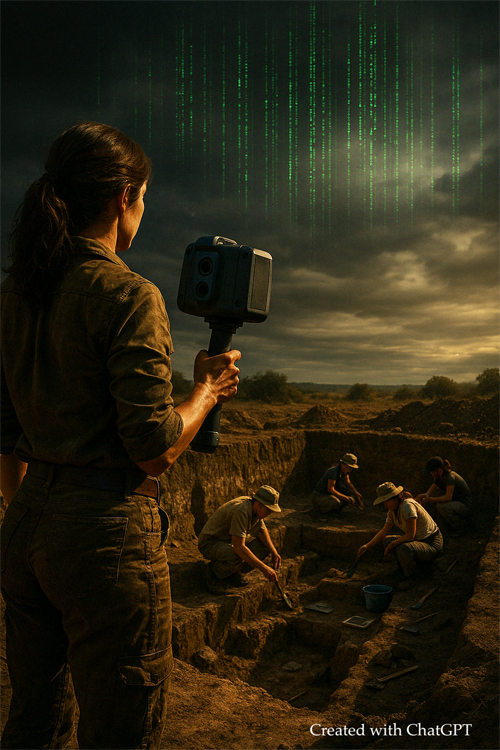3
JUN
12:00
(Digital) Archaeology in 2025 and Beyond
June 3, 2025 at 12:00 to June 3, 2025 at 13:30
Gosposka dvorana, Gosposka ulica 16, Ljubljana
Organizer: Inštitut za arheologijo ZRC, Narodni muzej Slovenije
As a discipline, archaeology is often conservative and reactive. While some archaeologists are quick to adopt and apply a new technique or technology, the structure of archaeology, characterized by financial limitations as well as regional and methodological conventions, often means that most of the practitioners retain previous methods for approaching the archaeological record. The continuously increasing pace of developments in digital technologies has challenged this traditional way of operating in archaeology, where our pace of adopting new technologies is also increasing and will continue to do so.
In this talk, we will approach the discipline as Archaeological Futurists, paying particular attention to the mobilization of existing and emerging digital technologies. These discussions will highlight trends in contemporary archaeology and envision their expansion and uptake in future archaeological work. For example, the rapid development of Artificial Intelligence (AI) makes it inevitable that its application will make an impact on archaeological practice. We will look at where the discipline stands with its adoption of various AI tools and envisions the scenarios for its widespread impact on archaeology in the future.
In addition to the technologies that stand to alter archaeological practice in the future, this talk will also address the applications of these digital tools in particularly growing foci in archaeological work: heritage-based outreach and education. The role of archaeological knowledge and goals of cultural heritage research have long been intertwined. However, with more user-friendly and cost-effective hardware and software, the use of digital platforms for engaging publics in heritage contexts continues to increase. More and more resources will be allocated to this public-facing aspect of archaeological work.

Dr. Kevin Garstki
is an Assistant Professor of Anthropology at the University of Wisconsin Oshkosh, USA. He is an anthropological archaeologist examining the impact of digital technology on modern archaeology, as well as the effect of emerging technology on prehistoric societies. His research focuses on the critical use and reuse of digital archaeological data, specifically using 3D visualization technologies to enhance the documentation, research, dissemination, curation, and archiving of material heritage. He has authored articles appearing in Antiquity, Journal of Archaeological Theory and Method, Journal of Archaeological Science, Advances in Archaeological Practice, Oxford Journal of Archaeology, Studies in Digital Heritage, to name a few. He has also authored the monograph, Digital Innovations in European Archaeology (2020), and edited the volume, Critical Archaeology in a Digital Age (2022). He currently co-directs the project, The Wolves and the Caesars: Digital Landscape Archaeology in Slovenia.
Dr. Adrienne Frie
is an Associate Professor of Anthropology at the University of Wisconsin Oshkosh, USA. She is an anthropological archaeologist whose research focuses on various topics including Iron Age Europe, human-animal relations, landscape archaeology, digital archaeology, archaeological curation, and the Native American Graves Protection and Repatriation Act (NAGPRA). Since 2019, she has been a co-director for the Wolves and the Caesars: Digital Archaeology of a Slovenian Hillfort Landscape Project (WAC). WAC provides training in traditional and digital field methods in collaboration with the National Museum of Slovenia, the Research Centre of the Slovenian Academy of Sciences and Arts, and the Park of Military History of Slovenia. This project is documenting the landscape around the Baba hillfort in Slavina, Slovenia through LiDAR, structure-from-motion photogrammetry, and excavation.